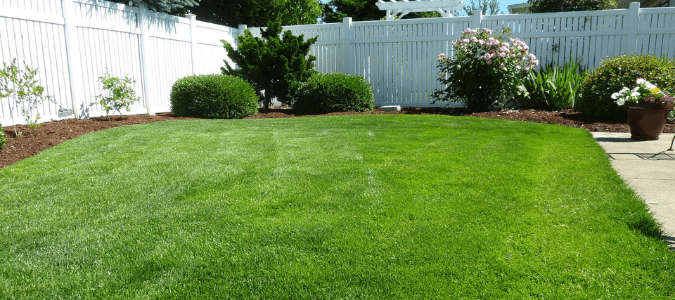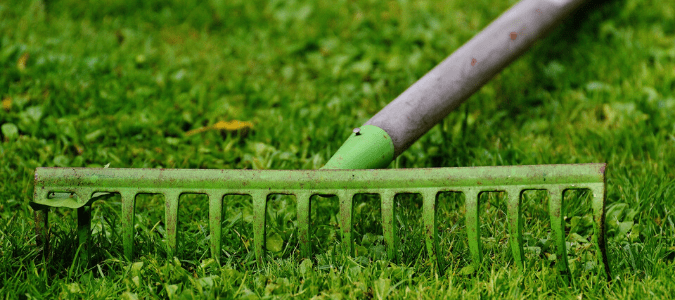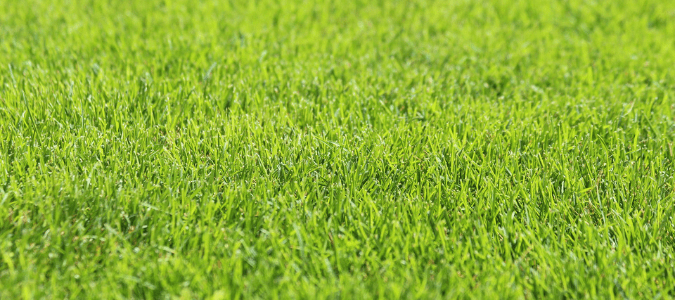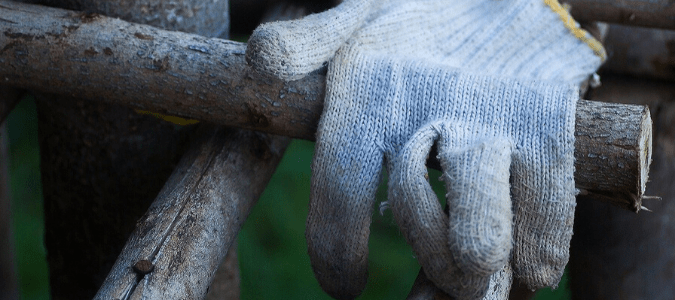
Homeowners that are researching how to keep their lawns lush and thriving may have the question: How and when should I aerate my lawn? Many people aren’t sure exactly what lawn aeration is, when to do it or whether it’s really necessary. If you consider the time and energy many of us spend on our grass and landscaping, aerating your yard is something that should be on your annual lawn care schedule. The best time to aerate your lawn is during your particular grass variety’s growing season, which means late spring for warm-season grasses like Bermuda and St. Augustine, or early spring or fall for cool-season grasses like ryegrass and fescue.
By aerating your lawn during its ideal growing time, you’re giving your turf a better chance to quickly grow into the holes that have been created as you provide your plants with a better pathway to sunlight, nutrients and moisture. You’ll want to avoid aerating before or after another traumatizing event, such as a heatwave or a heavy rainstorm. If in doubt, you can always consult with a specialist that is knowledgeable about your area’s soil types, climate and lawn maintenance best practices.
You may need to adjust how often you aerate your lawn, depending on how much traffic your grass gets. Some signs that it’s time to aerate your lawn include:
- It becoming more difficult to dig into your soil
- Water pooling on top of your soil or running off without sinking into the ground
- Your lawn thinning or turning brown
- Excess thatch buildup
You may be able to quickly go through some items on that list, but you may not know much about thatch. If your grass feels spongy when you walk across it, you may have a thick layer of thatch. Thatch is the term for pieces of yellow-brown grass that die and collect at the base of growing grass blades, just above the soil’s surface. Grass with a layer of thatch that is more than half an inch thick is a strong candidate for aeration, as is a lawn that receives heavy traffic of any type. Grass that was established by laying out sod is another strong candidate for aeration, since layering sod over existing soil may lead to compaction and poor drainage.
Before we go into more detail about the best methods for aerating your lawn and other important lawn care tips, let’s define what aeration is and why it is important. As we briefly mentioned before, aeration is the process of introducing small holes into the soil throughout your lawn so that water, air and nutrients are better able to reach the grass’s roots. Grass needs aeration because over time, the soil that it grows in can get compacted due to foot traffic and other types of normal use. Playing a game of tag or soccer, playing fetch with your dog, using the lawnmower or even simply walking across the grass over time can contribute to soil compaction, which starves your grassroots of the water and nutrients that it requires to stay healthy.
The process of aerating your lawn might seem daunting, and it can certainly be time-consuming. Many people outsource this task a lawn care professional. If you choose to tackle the job yourself, read on to learn tools, tips and tricks about aeration to help you better understand how to keep your lawn thriving, all year long.

Dethatching Vs. Aeration: What’s The Difference?
If you have heard of dethatching and aeration, you may wonder if you need to do one or the other or both on your lawn. First off, you should know that aeration and dethatching are closely related, but they are not the same. As previously mentioned, thatch is the layer of yellowed, dead grass that collects just above soil level at the base of living, growing grass blades. Up to a half-inch of thatch is normal and even beneficial, as it protects the grass’s roots from temperature extremes. On the other hand, thicker thatch can prevent your turf from being able to absorb much-needed water and important nutrients. If your lawn has a thick layer of thatch, you can see benefits from both aeration and dethatching.
As we’ve already mentioned, aerating your lawn refers to the process of making small holes in the soil throughout the lawn, while dethatching usually involves raking the grass in order to remove yellowed, dead grass. Both dethatching and aeration are intended to increase the flow of air, water and nutrients to and throughout the soil in order to encourage thick, healthy grass growth.
Both processes are most effective when grass is in its active growth season. Warm-season grasses such as Bermuda, St. Augustine or zoysia should be aerated or dethatched in mid to late spring, while cooler-season grasses such as ryegrass, Kentucky bluegrass or fescue benefit from these techniques in either the early spring or the fall.
If you’re trying to decide between the two, you should know that aerating your lawn is probably the best place to start. Aeration can have the same overall benefits as dethatching, and it can even lead to loosening and eliminating extra thatch. This is because aeration helps introduce microorganisms to the surface of the soil that help break down thatch over time, which can also help prevent St. Augustine grass problems.

Core Aerator Vs. Spike: Which Tool Should I Use?
When looking into aeration, homeowners often wonder about whether to use a core aerator or a spike.
Core aeration refers to the process of using either an aeration machine or a manual core aerator to remove small plugs or cores of soil and thatch from the lawn which are typically about half of an inch thick and between one and three inches long. The goal is for water, air and nutrients to flow more easily to the grassroots, while the soil plugs left on the top of the lawn disintegrate over a period of a couple of weeks, serving as topdressing for your grass. Core aeration can be more time-efficient if you either buy or rent a machine from a home improvement store, which can become costly.
Spike aeration is also called manual aeration, since it involves driving a spike into your lawn to create the aeration holes. You can either do this with a hand-held manual aerator, a tool that often comes equipped with a foot bar for extra leverage, or with any other tool that can poke holes in the ground. Spike aeration is a good choice for lawns with soil that isn’t very compacted. In a yard with compacted soil, you’ll find that it’s much more difficult to make holes in the earth. Keep in mind that the holes created by a spike aerator are typically narrower in diameter than those created by a core aerator, which means you may need to aerate more often to reap benefits for your lawn. Because you’ll be manually putting holes into your grass, this method may take longer. Since you can generally use any tool in your gardening shed to aerate your lawn, this method is relatively inexpensive.
If you do decide to go the manual route, you probably want to know exactly how that process works.

How To Aerate A Lawn By Hand: Tips And Tricks
A beautiful lawn is not only pleasing to look at. It also encourages you and your family to spend more quality time outside. In addition, maintaining your yard is also a key aspect of your home’s curb appeal, although keeping your grass and plants healthy and beautiful can be a painstaking process. Thankfully, the end result is worth the time and trouble. Here are some tips on how to aerate your lawn if you choose to do this on your own.
First, you’ll want to choose your tool for aerating. Many homeowners choose a simple spike aerator, which is a metal bar with two spikes at the base that you drive into the soil, two handles at the top and a foot bar for leverage. Others use a sharp gardening tool that can be driven into the soil to create individual holes throughout your lawn. As we’ve mentioned previously, this method is more time-consuming.
Once you have your tools ready, make sure your soil isn’t too wet for aeration. If the spikes you use for aeration come back out of the ground with mud clinging to them, the soil needs time to dry out before continuing. We’re also mentioned earlier that you need to make sure to aerate at the right time of year, which is during the peak growing season for your particular variety of grass. Aeration can also be combined with the application of fertilizer to help nutrients soak into the soil as efficiently as possible.
If conditions are optimal for aeration, go ahead and start the process of pushing your aeration tool into the soil. If you’re using a gardening tool, push down four inches into the soil, rock the tool back and forth to create a larger hole and then pull your tool out of the lawn. With any tool you use, leave everything that is brought up to the surface on your lawn and continue creating holes every 4 to 6 inches until you’ve aerated your entire lawn.

Benefits Of Lawn Aeration
Although there are many benefits of lawn aeration, they all have one end goal: a greener, healthier lawn. Some of the reasons to incorporate aeration into your regular annual lawn care schedule are:
- Improved oxygen and water intake
- Enhanced fertilizer benefits
- Reduced water runoff
- Stronger grass root systems
- Reduced soil compaction
- More resilient grass
Is aeration really something that every lawn needs from time to time, or can you get away with skipping it?
If your grass is thick and well established and receives no foot traffic of any kind, you can probably get away without aerating. Also, if you don’t mind thinner, discolored patches of grass mixed in with the thicker, greener parts of your lawn, the work may not be worth the payoff. For most homeowners, aerating at least once a year is an essential part of routine lawn care and maintenance and a great way to keep lawns green in summer heat.
Many homeowners want healthy, established grass, but don’t have the time, energy or know-how to maintain their lawn themselves. If that describes you, you might consider hiring a lawn service that can stay on top of these routine tasks for you, including annual or semi-annual aeration. A yard care specialist can aerate your lawn quickly and properly to encourage healthy grass growth, and can also determine the optimal schedule for fertilizing, regular mowing and other elements of proper lawn care.
ABC Can Care For Your Lawn
Lawn aeration can be tricky if you don’t have the right tools and, without the proper experience, you can spend a long time and unknowingly damage your grass. Instead of taking that chance, let the professionals at ABC Home & Commercial Services take lawn aeration off your plate. Not only can we help with this chore, but we can also take over your lawn mowing, fertilizing and watering so you can spend more time enjoying your yard as opposed to working on it.
